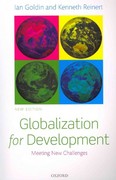Provide an intuitive explanation for why goods with very close substitutes havea more elastic demand. B. When
Question:
Provide an intuitive explanation for why goods with very close substitutes havea more elastic demand.
B. When we are using a good’s elasticity to label it in some way (elastic, inelastic, luxury, normal, inferior), we are often comparing the elasticity to the number 1(or —1).What’s so special about 1? Why is it important whether an elasticity isgreater or less than 1 (or —I)specifically?
C. You observe the market for bananas at two different times. At time X, thedemand curve is P = 24 — QD. At time Y, the demand curve is P = 44 — 2QD. At both times, the equilibrium price and quantity are P* = 4 and Q* = 20. The thingthat changed demand between the two times is the new appearance of dananason the market, an exotic substitute for bananas. Keeping in mind elasticity in thetwo periods, which of X and Y was before dananas, and which was after?
D. As time goes on, it becomes easier to substitute between different goods. Withthis in mind, draw three demand curves with three different slopes. Label them“most short term” to “most long term.”
E. The government is considering imposing a tax on some good. They will chargea tax of 1 per unit sold. For now, let’s just assume that this tax will raise theprice that consumers pay for the good by exactly 1. They are trying to figure out whether to levy this tax on the market for soda or the market for cigarettes. Inboth markets, equilibrium price is P* = 5 and equilibrium quantity is Q* = 1000, but demand is a lot more elastic for soda than it is for cigarettes.
a. Should the government tax soda or cigarettes if its goal is to raise as muchmoney as possible?
b. Should the government tax soda or cigarettes if its goal is to lower consumption as much as possible? (It might do this if it thinks people shouldn’t beconsuming these things.)
Using the inverse supply curve P = 2 + 3QS:
a. Calculate price elasticity of supply at P = 8. Show work.
b. Solve the inverse supply curve to get the supply curve, with Q5 in terms of P.
c. Calculate price elasticity of supply at P = 8 using the curve you got in
b. Youshould get the same answer as in part
a. Show work.
G. At the current market equilibrium, in which inverse supply is P = 4QS —1, theelasticity of supply is 3/4. Calculate the market equilibrium price and quantity.
In the market for farm-grown food, improvements in technology have led thesupply curve to shift to the right. This has lowered the equilibrium price of foodby 10%.
a. Will this shift lead the total amount spent on food (equilibrium price timesquantity) to rise or fall if demand is elastic?
b. Will this shift lead the total amount spent on food (equilibrium price timesquantity) to rise or fall if demand is inelastic?
[H1NT2If demand is elastic/inelastic, then the percentage change in price issmaller/larger than the percentage change in quantity]
Cross-price elasticity can be represented on a graph of a demand curve by show—ing a shift in the demand curve in response to a price change for the other good.
H. The price of hand soap is $4 per bottle. The price of hand sanitizer is $2 perbottle, and at this price 28 sanitizer units are demanded. The cross—priceelasticity describing how the quantity demanded of hand sanitizer responds to the priceof hand soap is .5.
a. Does this cross-price elasticity indicate substitutes or complements?
b. Draw the demand curve for hand sanitizer and label the price and Q0 at P = 2.
c. Draw how the demand curve shifts when the price of hand soap rises by 50%.
Label the new quantity.
[HINT2Use the formula in 3.c.iii Step 2, and plug in the elasticity, the percentageprice change, and the old quantity. Then, solve for the new quantity]
Step by Step Answer:

Globalization For Development Meeting New Challenges Meeting New Challenges
ISBN: 9780191624032
1st Edition
Authors: Ian Goldin, Kenneth Reinert






